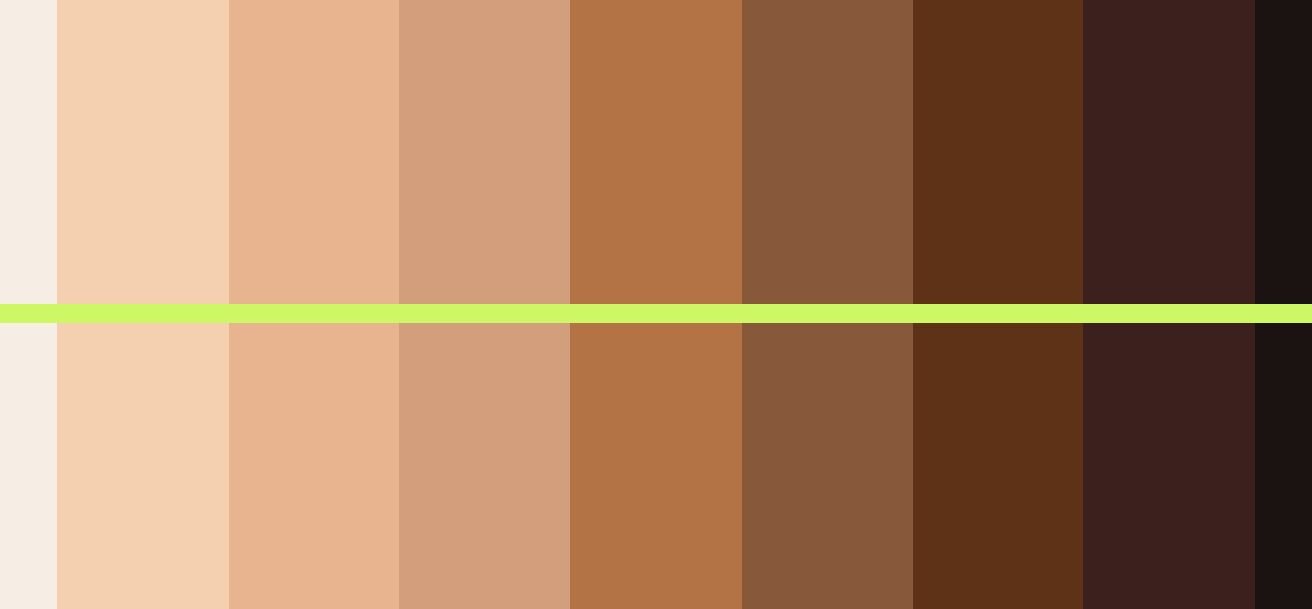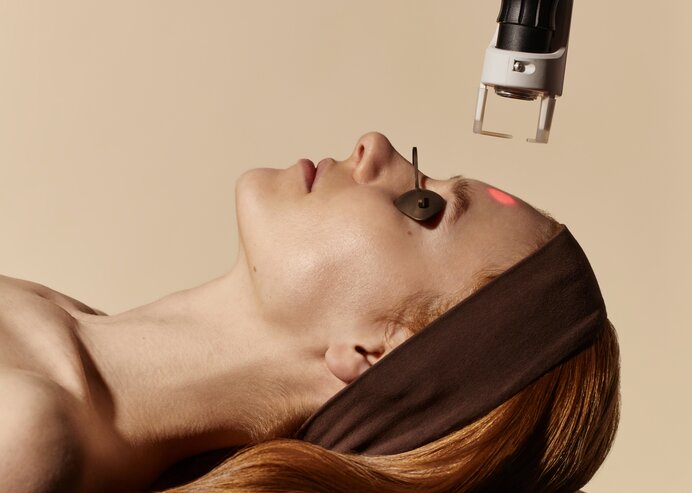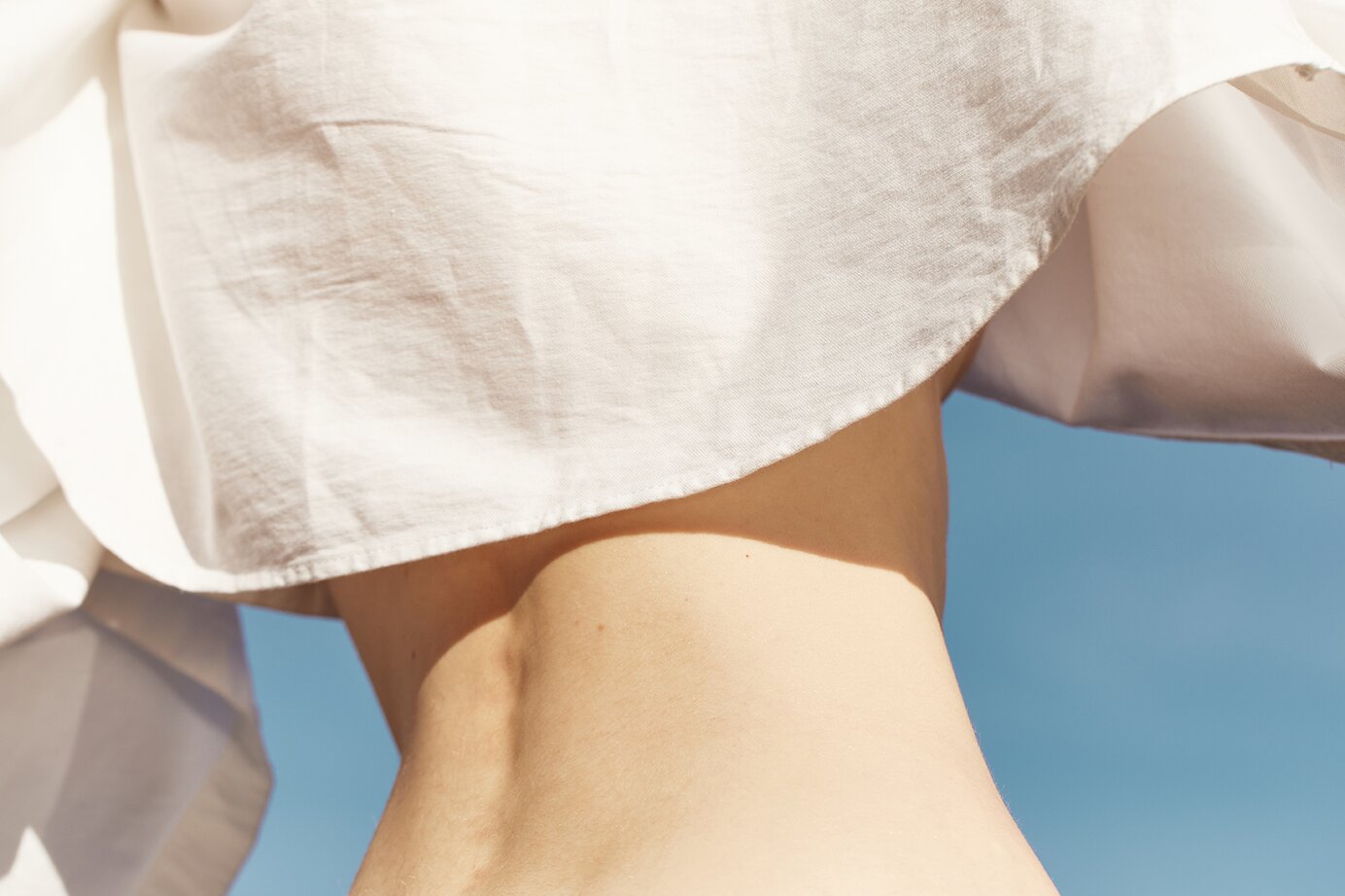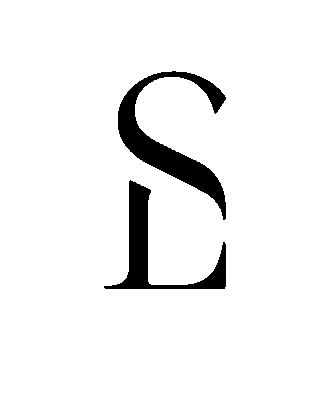
DOCTOR'S NOTE
The Science of Skin Tones
An introduction to the Fitzpatrick Scale and how this medical classification system determines the best skincare routine for your skin tone
At Skin Laundry we are a medical company and we know that skin tone goes beyond words like fair, light, medium, and deep. We use the Fitzpatrick Scale, a classification system based on the amount of melanin present in the skin that is used by dermatologists and skincare experts to identify skin tone and craft signature protocols for each client. Here, we break down this intricate system and explain which skin tones are more susceptible to specific conditions and why.
Read on for our Skin Laundry guide to skin tone and how to care for your complexion.
What is skin tone?
The term skin tone is used to describe the color of the surface of your skin. Common words used to describe skin tone in the beauty world are fair, light, medium, or dark. The tone of your skin is the result of melanin, a biological pigment that is responsible for hair and eye color and skin tone. The more melanin you produce, the darker your eyes, hair, and skin will be.
Learn more about melanin here.
What is the Fitzpatrick Scale?
The Fitzpatrick Scale is a classification system created by Dr. Thomas B. Fitzpatrick based on the amount of melanin present in the skin, how the skin reacts to sun exposure, and the skin’s tendency to burn or tan. Through this classification, the Fitzpatrick Scale also indicates risk related to other skin health concerns. For example, those with paler skin may be at higher risk for skin cancers, while those with darker skin may be more likely to develop post-inflammatory pigmentation after injuries.
The Fitzpatrick Scale
Type I: White, pale, freckled. Always burns, never tans.
Type II: Light, fair. Usually burns, tans minimally.
Type III: Medium to light olive. Sometimes burns, tans uniformly.
Type IV: Olive to light brown. Burns minimally, always tans well.
Type V: Brown to dark brown. Very rarely burns, tans very easily.
Type VI: Very dark brown to black. Never burns.
Do different skin tones need different types of skincare?
The main purpose of the Fitzpatrick Scale is to help dermatologists to develop skincare protocols. When it comes to creating a skincare routine, for the most part, the essential foundations are universal. Everyone, no matter what skin tone, should cleanse, moisturize, and apply SPF daily; however, fairer skin tones are more susceptible to rosacea, wrinkles and fine lines, while darker skin tones are more susceptible to hyperpigmentation, melasma and dry skin.
Read more about the best skincare routines for every skin type here.

Are Laser Facials safe for all skin tones?
At Skin Laundry, our treatments and protocols have been created to treat all skin tones, types I through VI, safely and effectively. Our laser bypasses healthy melanin to target excess melanin in post-inflammatory hyperpigmentation caused by skin injuries or acne, melasma, and sun damage. The treatment has also been proven effective at reducing the appearance of rosacea, common in those with fairer skin tones, by diffusing facial redness.
Are Resurfacing Facials safe for all skin tones?
Our non-invasive, Resurfacing Facial is safe for all skin tones. It’s also safe for skin with melasma and hyperpigmentation. At Skin Laundry, our treatments and protocols have been created to treat all skin tones, types I through VI, safely and effectively and our experts can advise you on the best routine for your skin type and concerns. Learn more about our treatments here.
Doctor's Note
At Skin Laundry we use the Fitzpatrick Scale to identify all our clients’ skin tones and create custom treatment protocols best suited for each.

What Skin Laundry products are best for rosacea?
STEP 1 - CLEANSE
Skin Laundry Hydrating Gentle Cleanser
This oil-free milky gel cleanser gently washes away dirt and impurities, leaving the skin cleansed and hydrated. Formulated with Niacinamide, Vitamin B5, and Watermelon Extract, this cleanser is rich in antioxidants and helps balance, soothe, calm, and strengthen the skin's surface.
STEP 2 - MOISTURIZE
Skin Laundry Vitamin B5 Antioxidant Moisturizer
This super lightweight moisturizer helps provide long-lasting hydration and supports a healthy skin barrier. Formulated with Vitamin B5, Hyaluronic Acid, and Camellia Japonica Flower Extract, this daily moisturizer provides powerful antioxidant protection and leaves the skin with a soft matte finish.
STEP 3 – TREAT
Formulated with a 13.5% blend of Alpha Arbutin and Vitamin C, this serum provides powerful antioxidant protection, boosts collagen production, and helps to brighten discoloration for a more radiant complexion while preventing further UV-related damage.
ALTERNATE WITH
Skin Laundry Tranexamic Acid Serum
Improve the appearance of dark spots, discoloration, and redness with our highly concentrated Tranexamic Acid Serum. Formulated with 3% Tranexamic Acid, 1% Niacinamide, and EndiMoist 4HA, this advanced serum helps target melasma and hyperpigmentation, reducing the appearance of uneven skin patches and dark spots and relieving rosacea.
STEP 4 – USE UV PROTECTION
Sun Defense Broad Spectrum SPF 30 Sunscreen
This lightweight, non-greasy, mousse-to-cream mineral sunscreen provides broad-spectrum protection while leaving little to no white residue or sticky feeling on the skin. Formulated with Zinc Oxide to deflect UV rays, moisturizing Hemisqualane, soothing Bisabolol, and Vitamin E, a powerful antioxidant, this daily sunscreen is your go-to skincare essential.
What are the best treatments for rosacea?
If you suffer from rosacea it is best to avoid harsh treatments, including chemical acid peels and physical exfoliation, which can trigger and exacerbate symptoms.
One treatment that has been proven to help manage rosacea is the Skin Laundry Laser Facial, which has been found to be effective and safe for the treatment of vascular and inflammatory lesions of rosacea for all skin tones, reducing redness without downtime.
Book your first Signature Laser Facial
The Resurfacing Facial has also been proven to be safe for those with rosacea and effective at calming redness, smoothing the skin and improving skin tone without downtime.
Learn more about our Facials
How To Choose a Sunscreen (and Why You Should Choose Ours)
The American Academy of Dermatology recommends the following when choosing a sunscreen:
1. Make sure the label says “broad spectrum.” The words broad spectrum mean that the sunscreen will protect your skin from both UVA and UVB rays.
2. Use an SPF 30 or higher, which can block about 97 percent of UVB rays.
Shop our line of dermatologist-approved skincare
Additional Reading
Your Shopping Bag
Your shopping bag is empty











